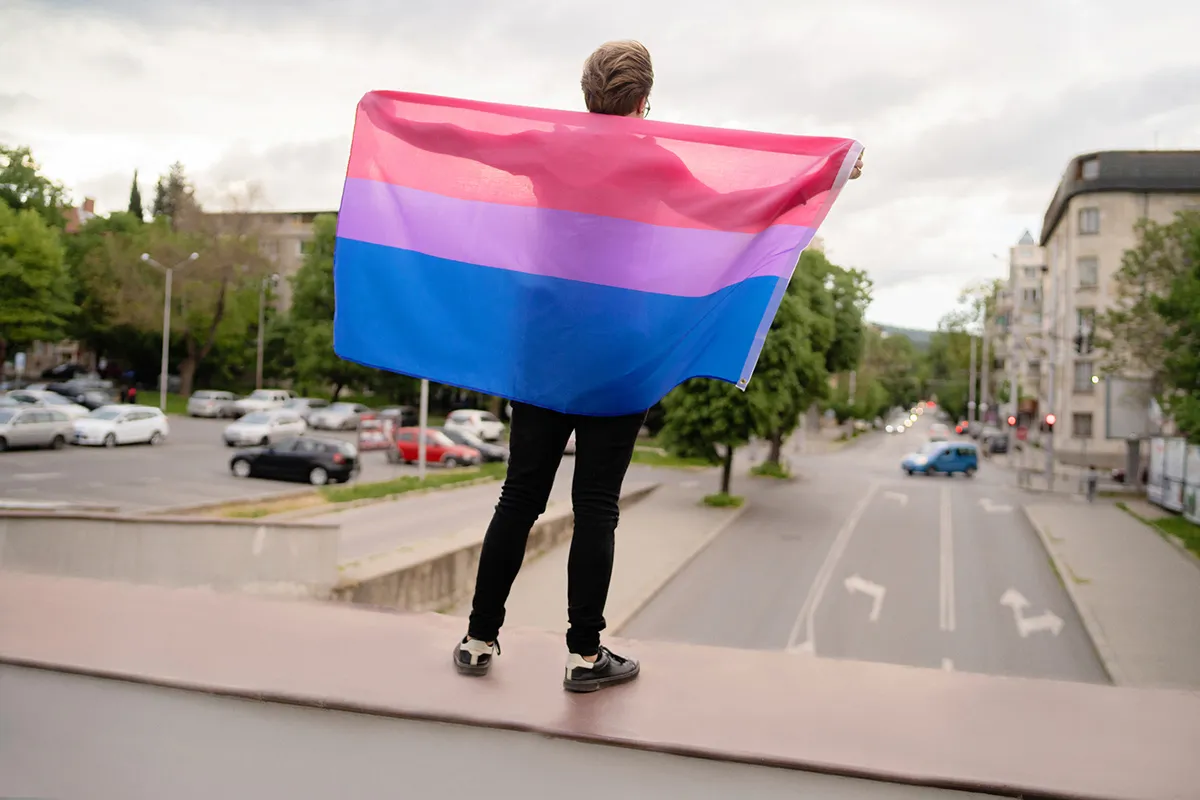The number of people who identify as queer in the UK Census has increased over the past few years. This trend is in particular driven by the rising number of LGBT+ identities among people aged 16 to 24 years. The most popular sexual identity within this emerging group is bisexual – the romantic and/or sexual attraction to more than one gender. Data from the Office for National Statistics (ONS) shows an increase from 0.7 per cent in 2015 to 1.1 per cent in 2019. Rather than a sudden new surge of bisexual desires, increased acceptance, legal protection and visibility are likely to be the cause of this increase.
But why should we count how many people are bi, or study what their experiences are? Research is young in this field, but we’re already seeing that tossing all queer identities into one research bucket renders the unique struggles of being bisexual invisible. For a start, it’s hard to even get an accurate sense of the exact number of British people who are bisexual. Many people who are attracted to people beyond one gender, shy away from the identity label ‘bisexual’. When it comes to research, this reluctance has led scientists to come up with alternative ways to capture and categorise sexuality.
One of the most common tools used is The Kinsey Scale. First published in 1948 by biologist Dr Alfred Kinsey, it is used to place people on a spectrum of sexual attraction between entirely heterosexual and entirely homosexual, using a scale from 0 to 6. It also includes ‘X’ for those who are asexual. It was so successful that it is still the single most popular scale for classifying sexuality. It’s often what people are indirectly referring to when they say, “Aren’t we all a bit bi?”
When YouGov surveys conducted in 2019 used questions that mimicked The Kinsey Scale, researchers found at least a third of people aged 18 to 24 say that they are attracted to multiple genders. A startling figure compared to the 1 per cent reporting to the ONS. Only with research can we cut through the reluctance people have to say “I am bisexual”, and find out whether those attracted to multiple genders need more support than those who aren’t.
Since social scientists and other researchers have started to analyse the B, we have begun to understand the struggles that uniquely endanger bi people. Research shows us that bi women are hypersexualised, and stereotypes that see bi women as promiscuous sexual playthings feed into people’s existing rape myths.
Accordingly, studies have found that bisexual women are significantly more likely to be raped, repeatedly sexually assaulted, and to be the victims of intimate partner abuse than lesbian and heterosexual women. Had this research homogenised all women into one group, we might never have known that the stereotypes affecting bi women specifically place them at far greater risk of sexual victimisation.

A different cluster of toxic assumptions awaits bi men. Bisexual men are seen as lying, to themselves and others, because they are thought to be gay. And, particularly in the 1980s and 1990s, bi men were also seen as murderers in disguise, catching AIDS when having sex with men and giving it their female partners. This left many bisexual men isolated and alone, failed by educational campaigns that rarely moved beyond gay spaces.
We need to acknowledge the unique needs of bi people, including a specific focus on bi men. If we don’t, we fail a huge amount of the population. Armed with bi-specific research, we stand a better chance of winning the fight back against the societal biases and misconceptions that hold bisexual people down.
As a young researcher, I didn’t know anyone else who was bisexual in my field, or, for that matter, in any field. It was rarely mentioned, not even in lectures specifically on sex and sexuality. When I graduated with my PhD in 2012, I had no idea how useful my background in criminal psychology would come to be when I turned my gaze to studying bisexuality. For my new book, Bi: The Hidden Culture, History And Science Of Bisexuality, I have found and spoken to researchers across the globe and in various disciplines who are all fighting for change.
I want the world to be a safer place for people like me. The best way that we can achieve that is to visibly support bi people. Let’s not allow the ‘B’ slip into the shadows of its colourful siblings.
Read more about sexuality:
